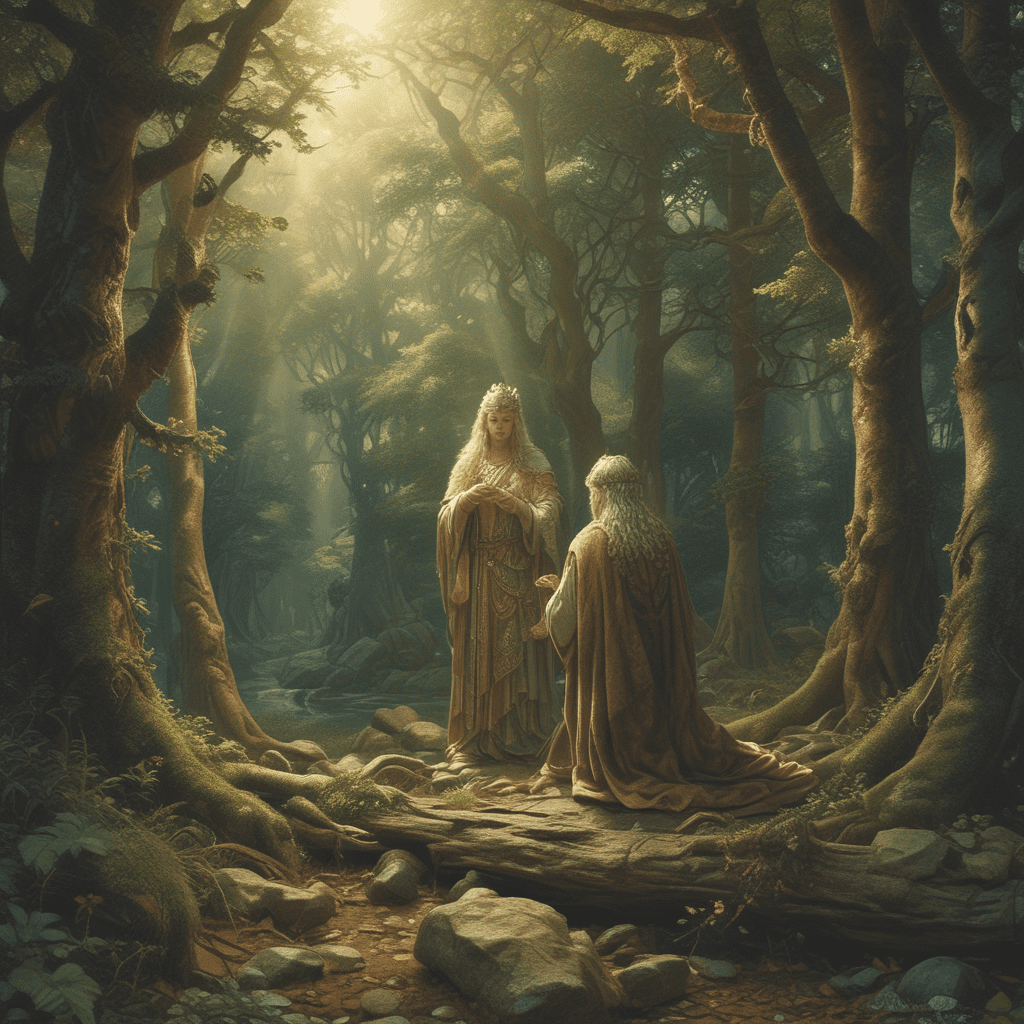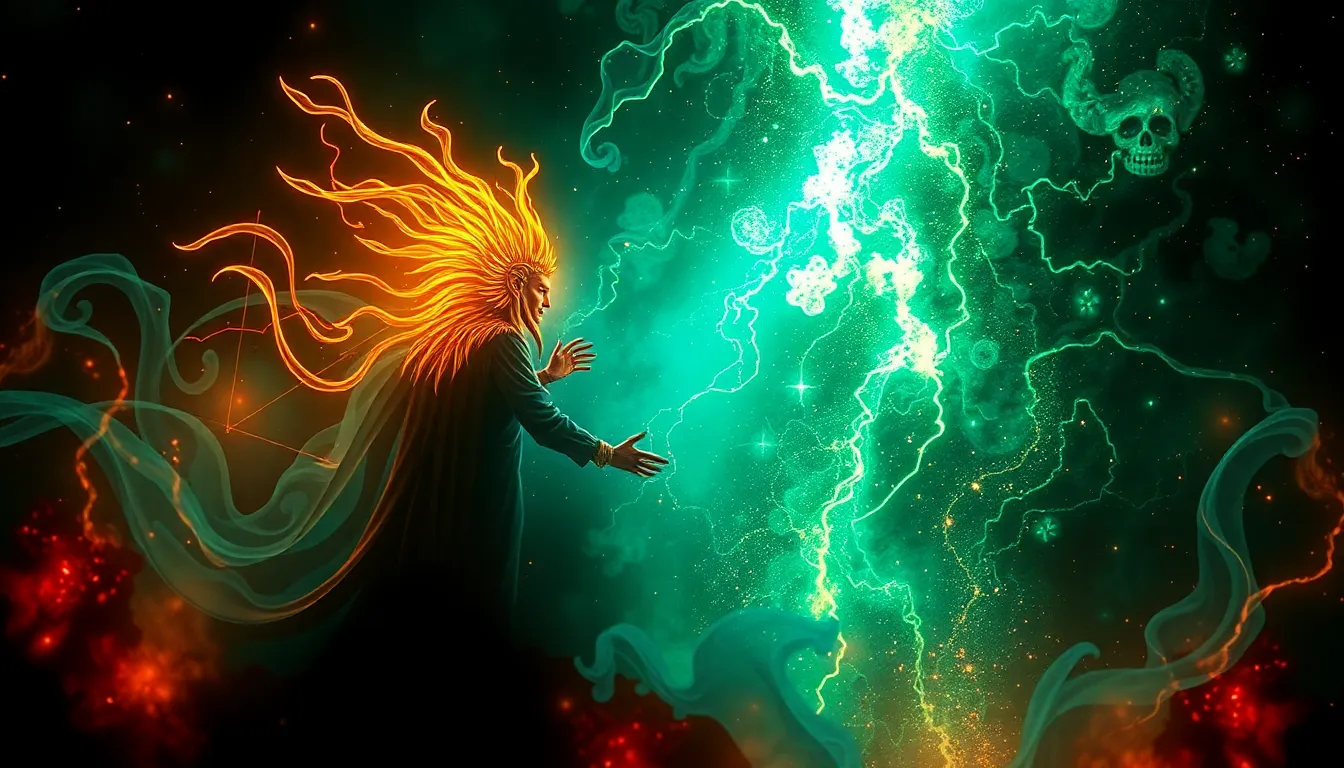The Underworld: A Mythical Journey into the Abyss of Fear
I. Introduction
The concept of the Underworld permeates various mythologies around the globe, often depicted as a realm beneath the earth where souls go after death. This dark and mysterious place serves as a significant element in human culture and psychology, representing our fears, hopes, and the unknown.
In this article, we will explore the Underworld’s definition in different mythologies, its psychological significance, and how it has shaped human understanding of life and death. We will delve into historical contexts, symbolism, major myths, psychological interpretations, representations in literature and art, personal transformation, rituals, and its relevance in contemporary society.
II. Historical Context of Underworld Myths
Underworld beliefs have their origins in ancient civilizations, where they were often intertwined with religious practices and the understanding of life after death.
A. Origins of Underworld beliefs in ancient civilizations
Many ancient cultures created elaborate beliefs surrounding the Underworld to explain the afterlife. For example:
- In Mesopotamian mythology, the Underworld, known as Kur, was a dark and dreary place where all souls went.
- The ancient Egyptians believed in the Duat, where the soul faced judgment before entering eternal life.
- In Greek mythology, the Underworld was ruled by Hades and featured various realms for the souls of the deceased.
B. Comparison of Underworld concepts across cultures
Different cultures have distinct interpretations of the Underworld, reflecting their unique beliefs and values:
- Greek Mythology: The Underworld is a complex realm with various regions like Tartarus and Elysium.
- Egyptian Mythology: The journey through the Duat involved trials and the weighing of the heart against a feather.
- Norse Mythology: The realm of Hel was a place for those who did not die gloriously in battle.
C. Evolution of Underworld narratives over time
As cultures evolved, so did their narratives surrounding the Underworld. These stories adapted to reflect changing values, beliefs, and experiences related to death and the afterlife.
III. Symbolism of the Underworld
The Underworld is rich in symbolism, often representing the fears and uncertainties of human existence.
A. The Underworld as a representation of fear and the unknown
It embodies the human fear of death, the unknown, and the darkness that lies beyond life. This fear often manifests in various forms within myths and stories.
B. Imagery and metaphors associated with the Underworld
Imagery related to the Underworld often includes:
- Darkness and shadows
- Labyrinthine pathways
- Ferries crossing rivers, such as Charon’s boat across the Styx
C. The duality of fear and transformation within Underworld journeys
While the Underworld is a place of fear, it is also a space for transformation. Heroes and souls often emerge from these journeys changed, having faced their fears and gained wisdom.
IV. Major Myths and Legends of the Underworld
Numerous myths illustrate the Underworld’s significance in various cultures.
A. The descent of Orpheus in Greek mythology
Orpheus’s journey to rescue his wife Eurydice from the Underworld is a poignant tale of love, loss, and the power of music to transcend even death.
B. The journey of the soul in the Egyptian Book of the Dead
This ancient text describes the trials a soul must face in the afterlife, emphasizing the importance of moral conduct during life.
C. Norse mythology: Hel and the afterlife
In Norse beliefs, Hel is the realm where those who die of illness or old age reside, highlighting the cultural view of honor in death.
V. Psychological Interpretations of the Underworld
The Underworld serves as a powerful symbol within the realm of psychology, often reflecting the subconscious mind and our deepest fears.
A. The Underworld as a symbol of the subconscious mind
Psychologically, the Underworld can represent the depths of our psyche, where unresolved issues and fears reside.
B. Fear of death and the unknown in psychological terms
Many psychologists suggest that an understanding of the Underworld can help individuals confront their fears of death and the unknown.
C. Therapeutic implications of engaging with Underworld myths
Engaging with these myths can facilitate personal growth, helping individuals process trauma and fear.
VI. The Underworld in Literature and Art
The Underworld has been a source of inspiration in literature and art throughout history.
A. Depictions of the Underworld in classic literature (e.g., Dante’s Inferno)
Dante’s “Inferno” explores the layers of hell, each representing different sins and the consequences of one’s actions in life.
B. Modern interpretations in contemporary art and media
Contemporary artists often draw on Underworld imagery to explore themes of identity, anxiety, and transformation.
C. The influence of Underworld imagery on popular culture
From movies to video games, the Underworld continues to capture the imagination, serving as a backdrop for stories of adventure and self-discovery.
VII. The Underworld and Personal Transformation
The journey through the Underworld is often linked to personal transformation and the Hero’s Journey.
A. The concept of the Hero’s Journey and the Underworld
Many heroes face the Underworld as a trial that leads to growth and enlightenment.
B. Personal narratives and stories of overcoming fear
Individuals often draw parallels between their life challenges and Underworld myths, finding meaning in their struggles.
C. The role of the Underworld in self-discovery and growth
Confronting the Underworld can lead to profound self-discovery and personal growth, allowing individuals to emerge stronger.
VIII. Rituals and Practices Related to the Underworld
Various cultures have developed rituals and practices to honor the dead and navigate the Underworld.
A. Ancient rituals to honor the dead and navigate the Underworld
These rituals often involved offerings, prayers, and ceremonies intended to guide souls safely through the Underworld.
B. Modern practices inspired by Underworld mythology
Today, many people engage in practices that reflect on mortality and the connections to their ancestors.
C. The psychological and spiritual benefits of these rituals
Participating in these rituals can provide comfort, foster connections with loved ones, and offer a sense of closure.
IX. The Underworld in Contemporary Society
The Underworld remains relevant in today’s world, reflecting our ongoing struggles with fear and anxiety.
A. The relevance of Underworld myths in today’s world
Underworld myths continue to resonate, helping people understand their fears and navigate life’s uncertainties.
B. Fear and anxiety in modern life: parallels with ancient myths
Just as ancient cultures faced fears of death, modern society grapples with existential anxiety and uncertainty.
C. The Underworld as a metaphor for contemporary struggles
The Underworld serves as a powerful metaphor for personal and societal challenges, illustrating the journey through fear to transformation.
X. Conclusion</h



